RC cars as a hobby
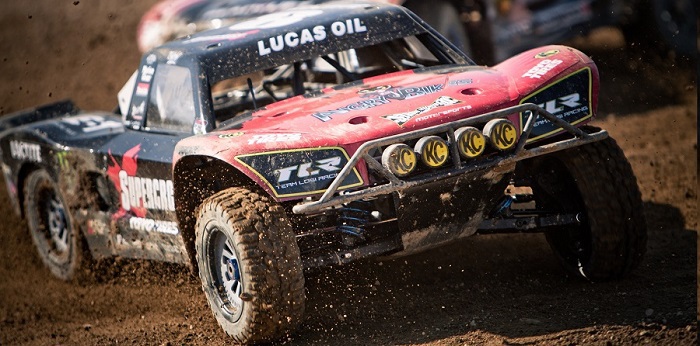
Greetings!
In the world there are a lot of diverse radio-controlled (RC) equipment, from very simple children's cars on the control panel to huge aircraft models reaching the size of a car. In this article, I want to talk about a part of the RC world called auto-modeling, about which classes of models are, into which categories are divided, where to start and so on.
Details under the cut. Caution, a lot of traffic.
Model Types
Monsters (Monster Truck)
The most popular class of equipment for entertainment.
It is a model with high ground clearance, huge wheels, a high center of gravity, respectively, very unstable.
Able to overcome any type of surface, ideal for ski jumping, slides and just for fun in the country.
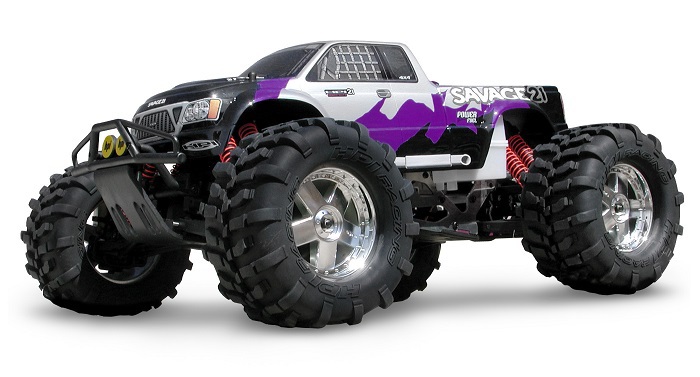
Buggy
Typically four-wheel drive. Able to overcome any type of surface, while riding on tightly packed soil will be most optimal.
It is this class that is most widely represented in competitions.

Short Course
It is a pickup with a short base and rear-wheel drive.
It has great similarity (copying) with real cars. Designed for the same surface as the buggy, i.e. rolled soil.
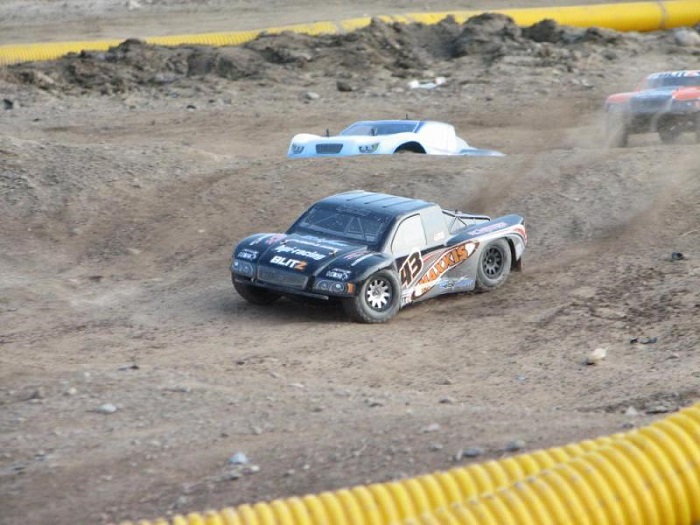
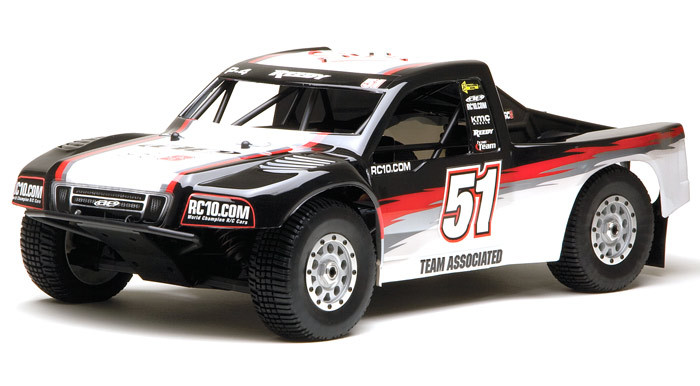
Traggie (Truggy)
Something between a buggy and a monster.
It is characterized by the presence of large widely spaced wheels and a small clearance. Accordingly, in this class, you can perfectly overcome a variety of obstacles, jumps, uneven ground, while handling is worse than a buggy, but better than a monster.
Great compromise option.
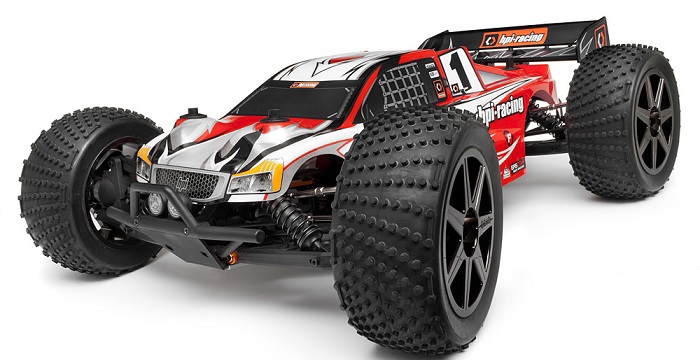
Crawlers
It is characterized by a huge clearance, the same huge suspension travel, low speed.
Designed exclusively for accurate and leisurely overcoming obstacles.

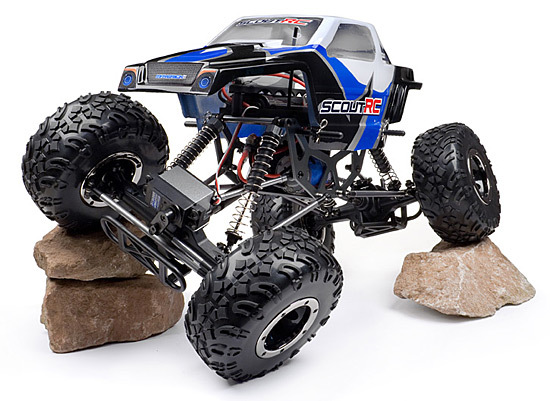
Drift
Exceptionally highway car.
Designed, as the name implies, for drift on the pavement.
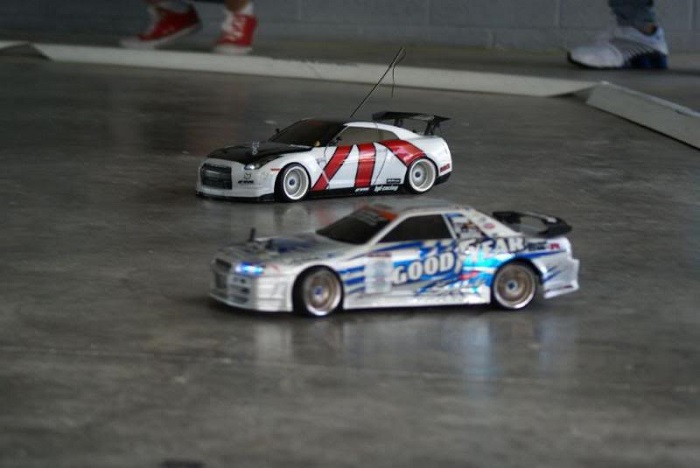
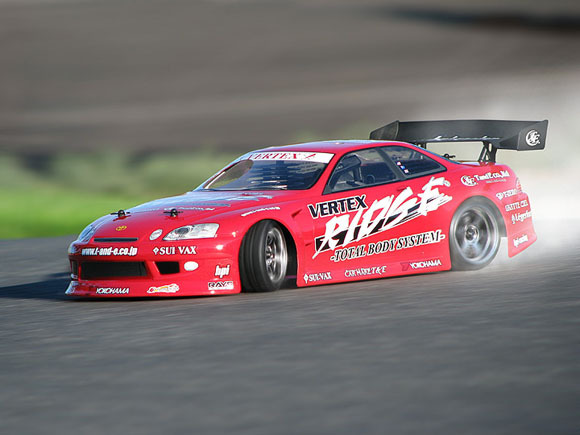
Rally (rally)
Along with the crawlers, a rather rare class of car.
As a rule, all-wheel drive cars. Differ in copying. Designed for rolled soil.
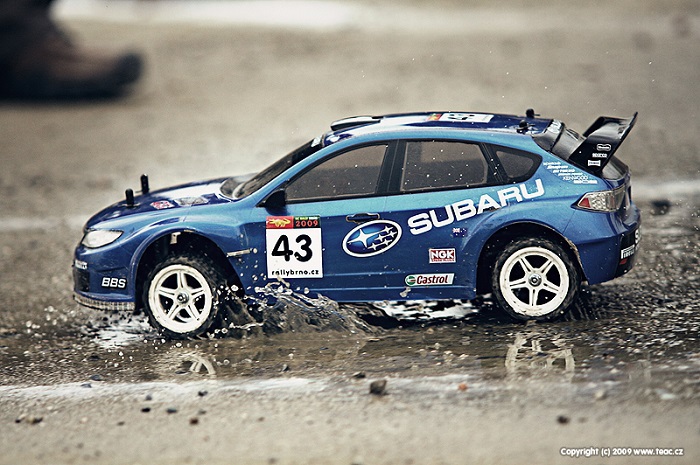
Trophy (trophy)
It features high copy capacity, full wire - often with continuous bridges, low speed, soft tenacious tires.
Designed to slowly overcome a variety of obstacles in the form of puddles, mud, swamps.
For popular models, a huge amount of tuning is sold in the form of cans, wheels, bodies, etc. to create an exact copy of real trophy cars.

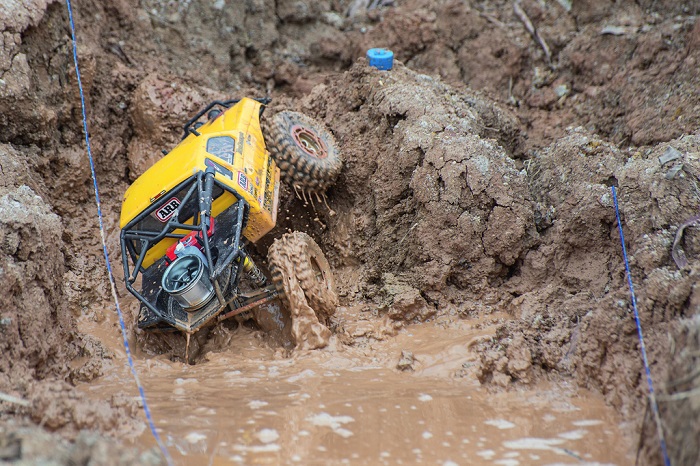

Scale models
Models vary in scale from micro (1:18) for huge 1: 5 or 1: 4 reaching 1 meter in length.
Models from 1:18 to 1:12 scale are actually toys and do not participate in competitions, while they are not suitable as gifts for young children and are not intended for riding at home, as they can reach speeds of 30-35 km / h.
The most interesting and popular scales are 1:10 and 1: 8. It is in these classes that the bulk of the competitions and the greatest variety of models are held.
Models with a scale of 1:10 and 1: 8 can reach 50 cm in length and are not intended for pokatushki in yards and crowded places, because they can reach a very high speed (up to 117 km / h HPI Vorza), and in combination with weight ( 4-6 kg) can cause serious injury.
The largest models of scale 1: 5 have, in the vast majority, an internal combustion engine with a volume of 24-28 cm3 and actually repeat the design of real cars.
Engines
At the moment, car models have four types of engines:
- Electric commutator motor . Electric motors of a completely standard design with a coil, brushes. It is characterized by low power, often poor reliability and is generally not interesting. It is applied on inexpensive models of small and micro scale. For models with a scale of 1:18, it allows reaching speeds of 25 km / h.
- Electric brushless (valve) motor (BC) . It appeared in RC relatively recently, noticeably pushing aside traditional models with internal combustion engines, since it gives similar power and, unlike internal combustion engines, is much easier to operate.
- Glow carburetor engine . Used in models from 1:12 to 1: 8 scale. Refuel with a content of 16% to 30% nitromethane. Very moody engine, requiring fine-tuning of the carburetor. It is not recommended for beginners or those who do not like to poke around with equipment. The engine is small (a few cubic centimeters), but it allows you to shoot a few horsepower and reach 30,000 - 40,000 rpm.
- Gasoline internal combustion engines. They are used in models of scale 1: 5. Refuel with AI 92-95 gasoline. Engines are much less moody than small-volume glow motors
Prices
Prices for car models, in contrast to aircraft models, have their own clear framework. So the prices of Chinese 1:18 models with collector motors start at 3,000 rubles (~ 80 usd). With a more powerful brushless motor, the price reaches 4500 rubles (~ 130usd). The price range for hobby models (not sports) of a more interesting scale (1:10, 1: 8) varies from 10,000 rubles to 25,000 (300 - 700 usd). The most expensive ones are models of a 1: 5 scale, prices can reach 40 - 70 thousand rubles (1200 - 2000 usd).
Options (supply options)
There are two types of models delivery:
- RTR - ready to run. This configuration means that the model is assembled and completely ready for races. But it should be borne in mind that batteries, a charger and so on may not be included. Usually they are included only for very budget devices. Also, if you buy a model with ICE, you will definitely need to buy a glow plug, batteries, fuel, thermometer and so on.
- Kit. This configuration means that for the final assembly of the model, in addition to batteries, chargers, etc., you will need an engine, equipment (remote control with receiver) wheels, an engine speed regulator, etc. Whales are for athletes and not for beginners. Such sets are usually delivered in maximum tuning and it is understood that the athlete already has all the additional body kit.
Equipment (appa)
One of the most important parts in an RC hobby is equipment: remote control, receiver, telemetry. A large number of options are presented on the market from very simple and budgetary options for 2-channel equipment for 15-20 bucks:
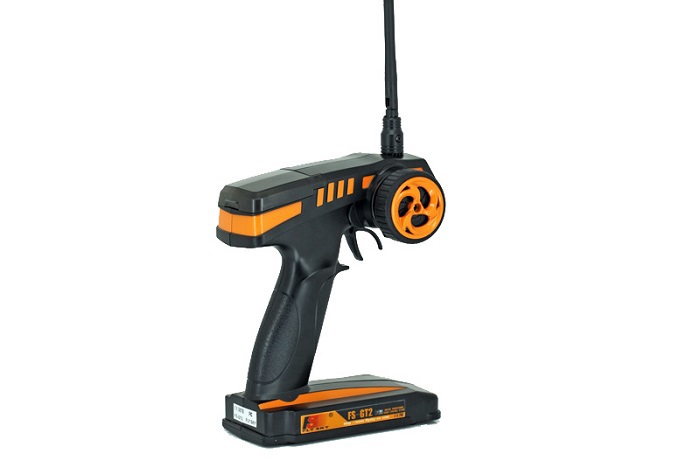
to a fancy 4- channel equipment , with telemetry, a bunch of settings and other chips and a price of 600 usd:
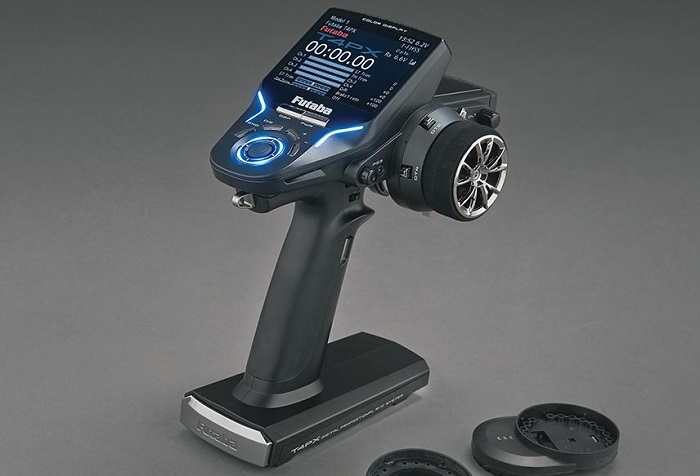
Car design on the example of my ICE tragedy
General picture from the official site:
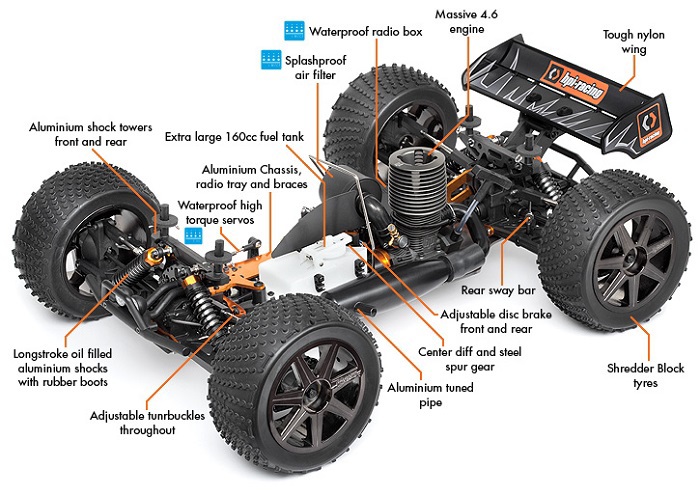
All-wheel drive model. Three differentials. Engine 4.6 cm3, 2.9 hp Two universal joints diverging from the central differential with front and rear. Two disc brakes are fixed to the central differential. The engine is of a glow type, which means that to start the engine the candle must be heated with a special glow, and then the candle spiral keeps the temperature itself.
Lower deck: The
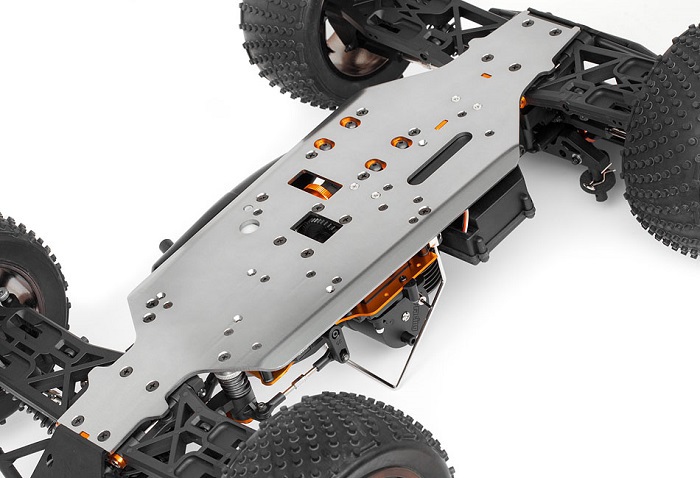
lower deck is an aluminum plate 4.5 mm thick with holes for starting the motor using the starting table.
Front suspension design:

The design of the front suspension is in fact not much inferior to real cars in complexity and greatly surpasses them in terms of reliability, so falling from a height of 2 meters to the ground with a dozen coups, as a rule for a car model, passes without any breakdowns.
Which model to buy?
The question is complex and as in the case of computers, you must first determine the budget and tasks. For example, if you just want to drive on models, jump from springboards and just get a fan, then your choice is a monster - for example, HPI Savage. You are interested in large cars of the 5th scale, you can look towards the HPI Baja 5T. A number of forums have special topics for beginners devoted to the election of technology - links at the bottom of the article.
Brands (manufacturers)
Currently, a large number of manufacturers are represented on the market. You can try to divide them into three categories:
- Purebred Chinese: Iron Track, Himoto, BSD Racing, VRX Racing, HSP. Favorably differ in price, while reliability and well-thought-out designs may suffer. You can buy as the first model in order to understand whether you like it or not, gain experience in repair and maintenance.
- RTR models of manufacturers from the States, the UK and Japan: HPI, KYOSHO, Team Associated, HOTBODIES, Traxxas, Maverick, Team Losi. On average, "in the hospital" have more reliability and thoughtful designs than the Chinese at a slightly higher price. In the case of manufacturers from the middle group, it is necessary to consider each model separately, since each brand has both good quality models and not high-quality ones
- Whales from Xrax, KYOSHO, Durango, Team Associated. Uncompromising models for athletes in full tuning. Just a whale can cost more than the same model in the RTR version and do not forget that you need to buy an app, an engine, wheels, a speed regulator and so on. With an average RTR model cost of 20 thousand rubles (600 usd), a prepared version for whale-based competitions can cost up to 60 - 70 thousand (2000 - 2300 usd).
Competitions
For fans of RC hobbies, competitions are held both at the regional level and the all-Russian. Competitions usually have strict regulations and are generally divided into the following classes:
- Buggy 1:10 4wd electro
- Buggy 1: 8 4wd electro
- Buggy 1:10 4wd nitro
- Buggy 1: 8 4wd nitro
- Hobbies unlim 1: 8
It is necessary to make a reservation that the classes described are a certain convention and may vary from city to city, depending on the popularity of certain models.
If you decide that you want to participate in competitions, well think about whether you need it, because like any other sport in the RC race, it requires a lot of time, money, knowledge and patience. As I mentioned above, preparing a new model from scratch for whale-based competitions can cost 60–70 thousand rubles. Used can be found for 25-35 thousand.
Nitro or electro
Before the advent of BK systems in the world of auto-modeling, ICE ruled, since the collector motors have much lower power. With the advent of brushless (valve) electric motors, the scales swayed in the opposite direction, since electric motors with comparable ICE power have a number of advantages, such as silence, reliability, no need to adjust, run-in, no need to start, maintenance is much easier and so on. At the same time, there is a drawback in the form of the need to charge the batteries and bloating the batteries at sub-zero temperatures.
I can say from myself that when I chose a serious model, the choice was made on the ICE option, which I later regretted many times, since maintenance, tuning, and so on take a lot of time, but you can ride while there is fuel, and the frantic roar of the engine in a compartment a cloud of smoke does not leave indifferent not one passerby.
How to start?
In order to understand whether you like it or not, it will be decided on the model and, in general, I advise you to come and look at the competitions, pokatushki. People are usually responsive and sociable, they will help and prompt, since they themselves once started this way. It is also worth asking a question on the RC hobby forums.
In St. Petersburg, you can come and chat on the race track called "Under the Bridge": http://maps.yandex.ru/-/CVvMuDY7 . At the weekend, there is always someone riding, but keep in mind that the track is general and free, so you need to behave culturally and not to crap.
useful links
- St. Petersburg Auto-Forum: http://rc-auto.ru/forum/
- All-Russian Forum of RC Hobbies: http://forum.rcdesign.ru/
- Useful articles about auto-modeling: http://rc-auto.ru/articles/
- Popular foreign online stores:
- Useful youtube channel about RC hobbies: http://www.youtube.com/channel/UCvsV75oPdrYFH7fj-6Mk2wg
- Forum thread for beginners: http://rc-auto.ru/forum/index.php?showtopic=12957 or http://forum.rcdesign.ru/f27/thread208313.html
Ask questions.
Thank you all for your attention.
